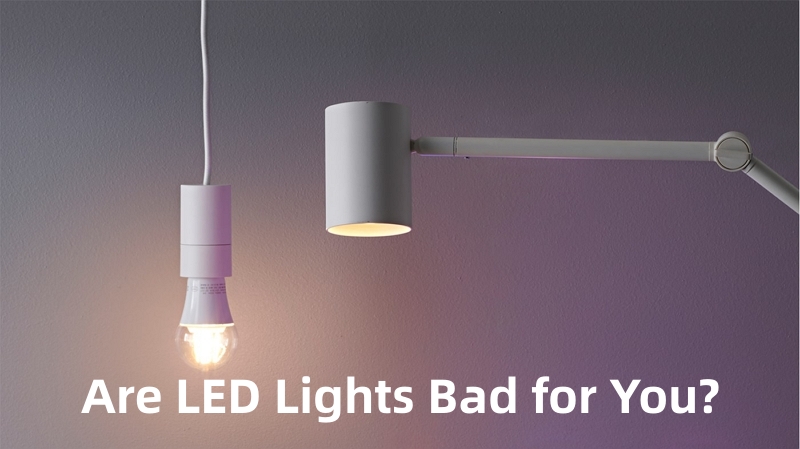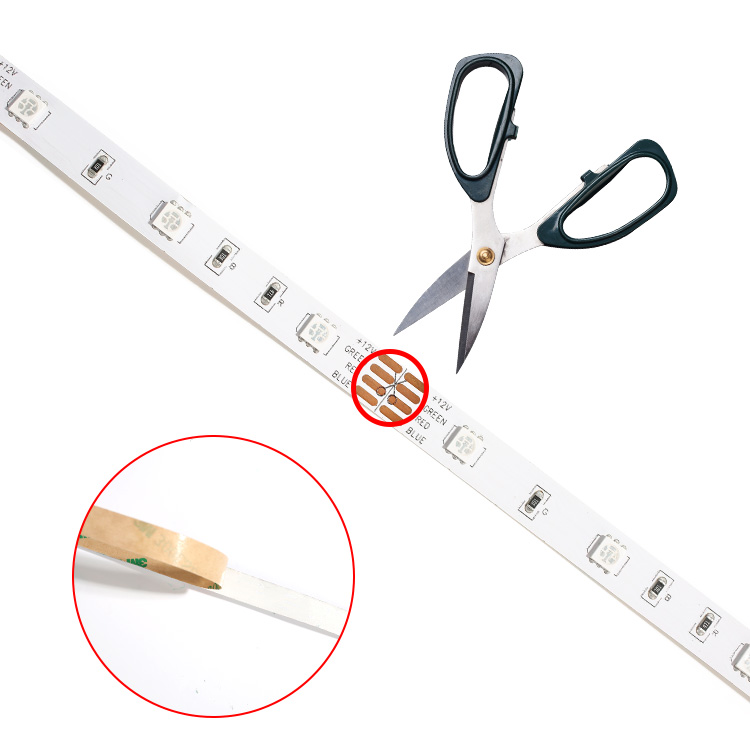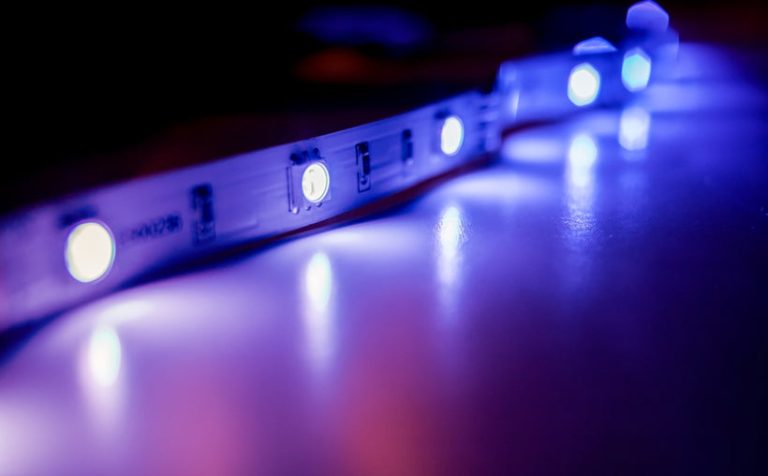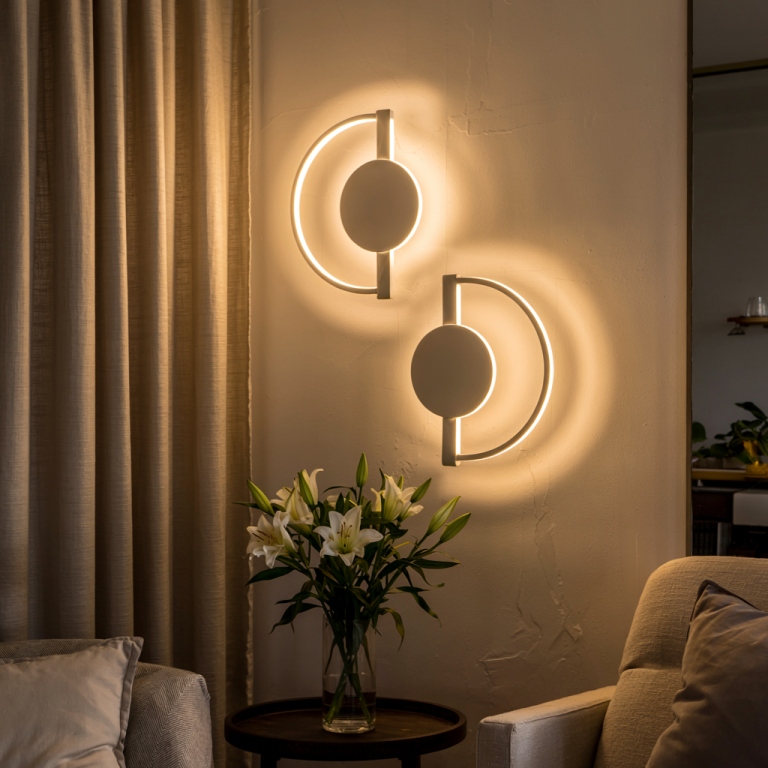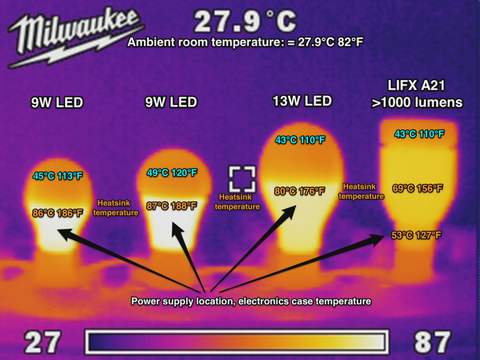Are Led Lights Bad for You? Discover the Truth
When you turn on a light, you’re probably not thinking about its impact on your health. But as LED lights become more common in our homes and workplaces, you might start to wonder if they’re as safe as they seem.
Are LED lights bad for you? The official answer is no. It’s a question that deserves your attention. Imagine discovering how the very lights you rely on could be affecting your sleep, your vision, or even your mood. This isn’t just another health scare—it’s about understanding what surrounds you every day.
As you read on, you’ll uncover surprising facts and expert insights that could change the way you look at the lights in your life. Don’t miss out on learning how to keep your environment safe and healthy.

Credit: dreamwaytech.com
Are Led Lights Bad for You?
Health Effects Of Led Lights
LED lights are everywhere. They light up our homes, offices, and streets. But many people wonder if they affect health. This section explores the health effects of LED lights. Understanding these effects can help you make informed choices.
Blue Light Exposure
LED lights emit blue light. Blue light can disrupt sleep patterns. It affects the body’s natural sleep-wake cycle. Using LED screens before bed can make it hard to sleep. Reducing screen time at night helps improve sleep quality.
Eye Strain And Fatigue
Long exposure to LED lights can cause eye strain. People working on computers often experience this. Symptoms include dry eyes and headaches. Taking breaks from screens can reduce these issues. Adjusting screen brightness can also help.
Impact On Mood
Light affects mood. LED lights can influence emotional well-being. Bright lights may boost alertness but also increase stress. Soft, warm lighting is more relaxing. Choosing the right lighting can improve mood and comfort.
Potential Skin Concerns
There are concerns about LED lights affecting skin. Some studies suggest potential risks. But more research is needed. Protective measures, like using sunscreen indoors, can be considered. Understanding your skin’s sensitivity is important.
Impact On Sleep Patterns
LED lights are everywhere. They are in homes, offices, and streets. These lights are energy-efficient and long-lasting. But they can affect your sleep. How? They emit blue light, which can trick your brain. It feels like daylight, even at night. This can confuse your body’s internal clock.
Read More: Do LED Lights Get Hot? Unveiling the Truth
Understanding Blue Light
Blue light is part of the visible spectrum. It has a short wavelength and high energy. Natural sunlight has blue light too. LED lights and screens emit this light. It can keep you awake when you need rest. Your body thinks it is still daytime.
Effects On Melatonin Production
Melatonin is a sleep hormone. Your body produces it when it is dark. Blue light from LEDs can reduce melatonin production. This makes it harder to fall asleep. You may feel tired but cannot sleep well.
Tips To Minimize Disruption
Limit LED exposure in the evening. Use dim lights in your bedroom. Consider warm-colored bulbs. They emit less blue light. Avoid screens an hour before bed. Try reading a book instead. These steps can improve your sleep quality.
Eye Strain And Visual Comfort
LED lights are common in homes and offices, but concerns about eye strain exist. Brightness and color temperature might affect visual comfort. Understanding LED light settings can help reduce potential eye discomfort.
When it comes to creating a comfortable environment, lighting plays a crucial role. With the rise of LED lights, many people wonder about their impact on eye strain and visual comfort. Are you someone who spends hours under LED lights and ends up with tired eyes? Let’s dive into this topic and see how LED lights might be affecting your day-to-day visual experience.
Understanding Eye Strain
LED lights are known for their brightness and energy efficiency. However, their intense blue light can be harsh on your eyes. This might result in eye strain, especially if you’re exposed for long periods.
Have you ever noticed your eyes feeling tired after working at your computer or reading under LED lights? It’s not just you. The flicker and glare from LEDs can contribute to discomfort.
Taking regular breaks can help. Practice the 20-20-20 rule: every 20 minutes, look at something 20 feet away for 20 seconds. This simple action can significantly ease the tension in your eyes.
Read More: Can You Cut Led Strip Light? Expert Tips Revealed
Visual Comfort And Led Lights
Visual comfort is all about how your eyes feel in different lighting conditions. LEDs, despite their advantages, sometimes fall short in providing a cozy lighting atmosphere.
Warmer LED bulbs can offer a more inviting glow. Have you tried using them in areas where you relax or spend a lot of time? They can make a noticeable difference in how your eyes perceive the space.
Adjusting the brightness of your LED lights might also help. Dimmers allow you to tailor the light intensity to suit your needs. This can reduce eye strain during different activities throughout the day.
Personal Experience With Led Lighting
I remember switching to LED lights in my home office. Initially, I appreciated the energy savings and modern look. But soon, I noticed my eyes felt tired after long work sessions.
Switching to warmer LED bulbs and installing a dimmer changed everything. Now, I feel less strain, and my workspace feels more inviting. Have you considered similar changes in your lighting setup?
LED lights are not inherently bad for your eyes, but their impact depends on how you use them. By making small adjustments, you can enhance your visual comfort and reduce eye strain significantly. Are you ready to give your eyes the comfort they deserve?

Credit: hirosarts.com
Energy Efficiency Benefits
LED lights offer significant energy efficiency benefits, reducing electricity bills. Concerns about their safety are minimal, as they emit less heat and no UV radiation, making them safe for everyday use.
When you think about upgrading your home lighting, the energy efficiency of LED lights is a strong reason to make the switch. LED lights are known for their ability to save energy compared to traditional incandescent bulbs. This can lead to lower electricity bills and a reduced carbon footprint. But what exactly makes LED lights so energy efficient? Let’s dive into the specifics.
What Makes Led Lights Energy Efficient?
LEDs, or Light Emitting Diodes, are designed to use less power. Unlike incandescent bulbs that waste energy by emitting heat, LEDs convert most of their energy into light. This means you get bright illumination without the excessive heat output.
Consider your own experience. Have you ever touched a traditional bulb and felt the burn? With LEDs, that’s a thing of the past. They stay cool to the touch, making them safer and more efficient.
Long Lifespan Equals Energy Savings
The longevity of LED lights contributes significantly to their energy efficiency. While incandescent bulbs may last around 1,000 hours, LED lights can shine for up to 25,000 hours or more.
Imagine not having to change bulbs for years. Not only does this save you money, but it also reduces waste. Fewer replacements mean less energy used in manufacturing and transporting new bulbs.
Direct Impact On Your Energy Bills
Switching to LED lights can have a noticeable impact on your monthly energy bills. LEDs use up to 80% less energy than incandescent bulbs. This translates to tangible savings that you can see when you pay your electricity bill.
Have you checked your energy bill after changing your lighting? It’s a small adjustment that can lead to big savings over time.
Environmental Benefits Of Energy Efficiency
By using less energy, LEDs help reduce greenhouse gas emissions. This is a direct benefit to the environment, as less energy consumption leads to lower carbon emissions from power plants.
Think about it—every LED light you use is a step towards a healthier planet. It’s a simple change that can make a huge difference.
Are You Ready To Make The Switch?
Switching to LED lights is not just about saving money. It’s about making a conscious choice to be more energy-efficient and environmentally friendly.
What stops you from making the switch? Whether it’s cost, convenience, or habit, consider the long-term benefits. Your next decision could be a bright one for your wallet and the world.
Comparing Leds To Other Lighting Options
Comparing LEDs to other lighting options can help you make informed choices about what illuminates your space. With so many options available, understanding the differences is crucial. Let’s dive into how LEDs stack up against incandescent and CFL lighting in various aspects.
Energy Efficiency
LEDs are champions when it comes to energy efficiency. They consume up to 80% less power than incandescent bulbs and significantly less than CFLs. Imagine the savings on your electricity bill over time.
Wouldn’t you prefer a solution that’s both eco-friendly and economical?
Lifespan And Durability
LED lights have a much longer lifespan compared to their counterparts. While incandescent bulbs may last a mere 1,000 hours, LEDs can shine for up to 25,000 hours or more.
This longevity means fewer replacements and less hassle for you. Have you noticed how often you’re changing bulbs?
Heat Emission
LEDs emit very little heat, making them safer and more comfortable to use. Incandescent bulbs, on the other hand, can get extremely hot, posing a burn risk.
CFLs also emit some heat but not as much as incandescent bulbs. Keeping your space cool and safe sounds appealing, right?
Environmental Impact
LEDs are free of toxic elements like mercury, which is found in CFLs. This makes disposal easier and more environmentally friendly.
Incandescent bulbs, while not containing hazardous materials, aren’t as energy-efficient, contributing to higher carbon footprints. Are you considering the environmental impact of your lighting choices?
Cost Considerations
Initially, LEDs might seem pricier than incandescents or CFLs. However, their lower energy consumption and longer lifespan mean they are more cost-effective in the long run.
Think about the total cost of ownership rather than just the purchase price. Wouldn’t it be wise to invest a little more now to save a lot later?
Each lighting option has its strengths and weaknesses. Understanding these differences can guide you to the best choice for your needs and lifestyle. What matters most to you when selecting a light bulb?

Credit: www.waveformlighting.com
Frequently Asked Questions
Is It Bad To Have Led Lights In Your Room?
LED lights are generally safe for your room. They are energy-efficient and long-lasting. Avoid blue light exposure at night, as it can disrupt sleep. Choose warm white LEDs for a comfortable atmosphere. Ensure proper installation to prevent electrical issues.
Are Led Lights Good For Your Brain?
LED lights can positively affect your brain by enhancing focus and mood. They emit less UV radiation and reduce eye strain compared to traditional lighting. Proper use of LED lights can improve sleep patterns and boost productivity. Ensure to choose appropriate brightness and color temperature for optimal benefits.
Why Shouldn’t You Have Led Lights On At Night?
LED lights can disrupt sleep by affecting melatonin production. Blue light emitted by LEDs signals wakefulness to the brain. Reduced melatonin leads to poor sleep quality, impacting health. For restful sleep, use dim, warm lights or turn off LEDs at night.
This promotes better sleep hygiene and overall well-being.
Are Led Lights Safe For Human Eyes?
LED lights are generally safe for human eyes. They emit less UV radiation than traditional bulbs. It’s important to avoid prolonged exposure to very bright LED lights. Use LED lights with appropriate brightness and color temperature to minimize eye strain.
Conclusion
LED lights are generally safe for daily use. They offer energy efficiency and long-lasting performance. While some concerns exist, proper usage minimizes risks. Choose quality lights to ensure safety. Balance LED exposure with natural light. This helps maintain healthy routines.
Pay attention to personal comfort and eye health. Regular breaks from screens are wise. LED lights are part of modern life. Understanding their impact is key. Stay informed and make choices that suit your needs. Keep lighting comfortable and efficient.
Your well-being matters most.
